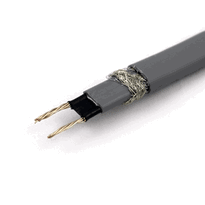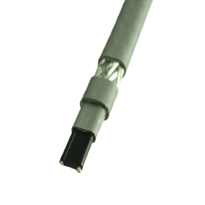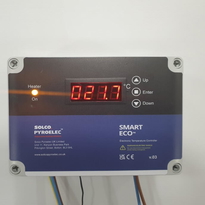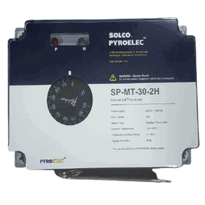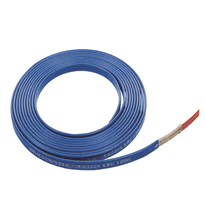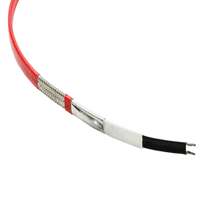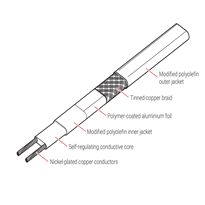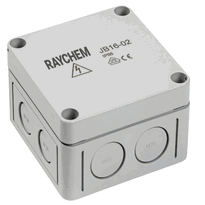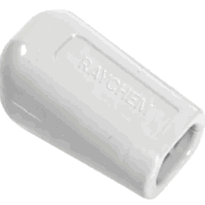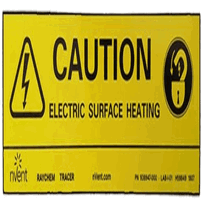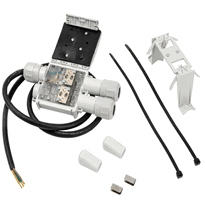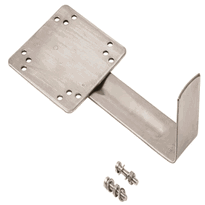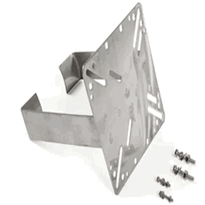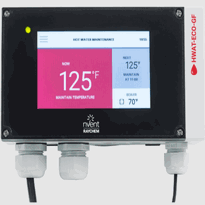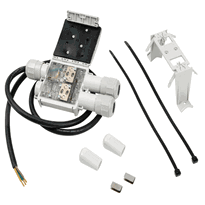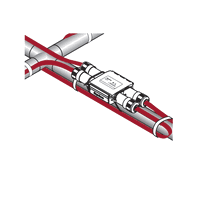Heat Tape for Pex Pipe
Heat tape for PEX pipes must be carefully selected to ensure compatibility, as some tapes are chemically or physically unsuitable for plastic piping. Self-regulating or constant-wattage tapes are viable options but should be securely fastened with non-metallic tape, avoiding adhesives that could damage PEX. Proper installation involves measuring the length of the pipe accurately, attaching the tape securely in accordance with manufacturer instructions, and insulating the pipe afterwards to minimize heat loss.
Electrical safety standards are essential, with correct electrical connections being critical to prevent hazards. Regular system inspections and maintenance help provide ongoing safety and efficiency. Thoughtful selection and meticulous installation of heat tape can effectively protect PEX pipework in colder conditions, ensuring reliable performance and safety.
Understanding Compatibility of Heat Tape With PEX Pipes
Having a clear understanding of how heat tape interacts with PEX pipes is crucial for ensuring safe and effective freeze protection in UK plumbing systems.
Self-regulating heat tapes are designed to vary their heat output in response to ambient temperatures, offering energy efficiency and consistent warmth. However, they may have limitations when used with certain pipe materials, including some types of plastic.
Constant-wattage heat tapes supply a steady level of heat regardless of external conditions. This makes them particularly suitable for long pipelines or areas subject to extremely cold weather, though they tend to consume more energy compared to self-regulating options.
When choosing heat tape for PEX pipes, it's important to avoid adhesive-backed varieties that can be applied directly onto the pipe surface. Chemicals in adhesives may cause damage or degrade the pipe material over time.
Instead, secure the heat tape using specialized electrical tape designed for outdoor or electrical applications, or employ nylon ties that don't compromise the integrity of the pipe.
Always check that the product explicitly states compatibility with PEX or other plastic pipes. Using a heat tape rated for plastic piping ensures safety and longevity, preventing potential damage caused by improper heat levels or chemical interactions.
Being aware of material-specific compatibility considerations is essential to avoid chemical reactions or damage that can compromise your plumbing integrity.
Proper selection and secure installation minimize risks, extend the lifespan of your plumbing system, and provide reliable freeze protection for your PEX piping in UK climates. Choosing the right heat tape based on material compatibility ensures the system remains safe and effective over time.
Proper Installation Procedures for Heat Tape on PEX
Proper installation of heat tape on PEX pipes requires careful preparation, precise placement, and adherence to safety protocols to ensure effective freeze protection and prevent damage.
Begin by selecting a heating cable suitable for the pipe diameter and environment, typically supporting pipes from 10 mm to 40 mm in diameter.
Measure the pipe accurately to determine the correct length of the cable needed.
Before installation, disconnect the power supply, inspect the pipe for any damage, and gather necessary tools such as wire strippers, wrenches, and insulating tape.
Secure the heat tape starting at one end of the pipe, ensuring it maintains close contact with the pipe surface throughout its length.
Fix the tape in place every 15 cm with non-metallic tape to prevent movement and ensure even heat distribution.
Install temperature sensors as per the manufacturer's guidelines, typically spaced at regular intervals along the pipe length.
Make sure they're properly connected and protected from the elements.
Avoid covering the heat tape with insulating material until you have confirmed that the system is functioning correctly.
Once verified, insulate the pipe appropriately, leaving the heat tapes accessible for maintenance.
A system that's correctly connected, inspected, and insulated will provide reliable freeze protection for PEX piping in UK environments.
Safety Measures and Electrical Considerations When Using Heat Tape
When installing and operating heat tape on PEX pipes, adhering to rigorous electrical safety standards is essential to prevent hazards such as electric shocks, fires, and damage to the equipment. It's important to ensure that the heat tape carries the appropriate certification, such as UL listing, which confirms it meets recognized safety standards.
Complying with local electrical codes and the National Electrical Code (NEC) guidelines helps ensure correct wiring and safe installation practices. Using a Ground Fault Circuit Interrupter (GFCI)-protected outlet is highly recommended, as it significantly reduces the risk of electric shocks in environments where moisture may be present.
Prior to installation, inspect the heat tape thoroughly for any signs of damage or wear, such as cracks or frayed wires. This simple step can prevent electrical faults and potential hazards.
When installing heat tape, ensure it's placed directly on the surface of the PEX pipe. Avoid overlapping insulation or layering materials that could cause overheating. Always verify that the power source matches the heat tape’s wattage and doesn't exceed the circuit’s capacity to prevent electrical overloads.
Protect all electrical connections from exposure to moisture by using waterproof enclosures or corrosion-resistant fittings. Keep all cords and connections elevated and away from wet or damp ground to minimize the risk of short circuits.
Additionally, confirm that the heat tape is compatible with PEX pipes; avoid using adhesives or tapes that could degrade the pipe material or compromise its integrity.
It's also advisable to select a heat tape that meets safety standards and certifications, such as UL listing, to ensure reliable and safe operation over time.
Maintenance and Troubleshooting of Heat Tape Systems on PEX
Regular maintenance and systematic troubleshooting are essential for ensuring the reliable operation and longevity of heat tape systems on PEX pipes. To maintain optimal performance, inspectors should examine the heat tape at least once a year, preferably before the onset of winter.
During this examination, they should look for signs of wear, corrosion, or damage and ensure that the insulation remains intact and free from tears or moisture ingress. Proper insulation is crucial to prevent heat loss and ensure efficient operation of the heat tape system. It is important to verify that the heat tape is plugged directly into a grounded, residual current device (RCD)-protected socket, avoiding the use of extension cords. Additionally, the inspector should check for consistent warmth along the entire length of the pipe, which indicates proper functioning of the heat tape. Using the right pipe insulation tools and techniques during inspection can help effectively identify potential issues early.
Troubleshooting involves visually inspecting the system for obvious damage such as melted sections, exposed wiring, or worn areas. Check circuit breakers and fuses to ensure they aren't tripped or blown, and test the thermostat or self-regulation features to confirm they're operating correctly. If persistent issues are identified, replacing damaged or malfunctioning components is advisable. Consulting manufacturer guidelines can provide specific instructions for troubleshooting and maintenance routines tailored to the particular heat tape system installed.
Regular attention to these aspects will help ensure the system operates efficiently and safely throughout its service life.
Conclusion
Proper application of heat tape on PEX pipes requires careful selection, correct installation following manufacturer instructions, and adherence to safety protocols to prevent electrical hazards. Regular maintenance, including inspection for damage and proper functioning, is essential to ensure the system's reliability. Troubleshooting should focus on identifying faults such as electrical issues or insulation wear.
Implementing these practices guarantees that the heat tape effectively maintains pipe integrity in cold conditions. This minimises potential failures and safety risks, while also extending the lifespan of PEX piping systems.








